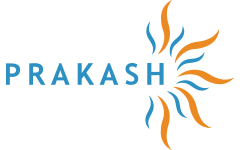
Ultimate Guide Traditional vs. Digital Advertising
There has been a long-running discussion about digital versus traditional advertising. Which approach is better? Which gives advertising the most advantages? These are typical inquiries that come up regularly.
We’ll examine the intricate interactions between digital and traditional advertising in this blog article, highlighting the benefits, drawbacks, and tactical considerations of each approach. We’ll also look into how general advertising techniques are affected by digitization and the transition from traditional to digital advertising.
Let’s get started:
Traditional advertising: What Is It?
Conventional advertising promotes goods and services through the use of well-known media including radio, television, newspapers, magazines, and billboards. These media have been used for many years and have shown to be successful in reaching big audiences.
Why opt for Conventional Advertising?
Over time, traditional marketing has established credibility and trust. Campaigns with the goal of reaching a large audience and increasing brand awareness frequently include some traditional advertising, if not all of it.
What is Digital Advertising?
Advertisements delivered via digital channels like text messaging, websites, social media, email, search engines, and mobile apps is digital advertising.
Why Choose Digital Advertising?
Today’s consumers heavily rely on digital methods to research products. According to HubSpot Research, 77% of customers investigate a brand online before engaging with it, and 51% use Google to research products before buying.
Digital advertising employs various tactics to reach customers, aiming to persuade them to make purchases, increase brand recognition, or engage with the brand. Modern digital marketing channels include social media, content marketing, website marketing, SEO (search engine optimization), and PPC (pay-per-click) advertising.
Engagement marketing, based on data acquired over time, creates meaningful relationships with new and returning consumers. It does so by engaging customers in a digital landscape, enhancing brand recognition, establishing the brand as a thought leader, and positioning the company at the forefront of the industry.
Digital Marketing vs. Traditional Marketing: A Comprehensive Comparison
Digital marketing and traditional marketing represent two distinct approaches to promoting products or services to a target audience. Here are the key differences between the two:
Medium of Promotion
Traditional Marketing: Involves traditional channels such as television, radio, newspapers, magazines, billboards, direct mail, and flyers.
Digital Marketing: Utilizes digital platforms and technologies, including websites, social media, email, search engines, online ads, and mobile apps.
Reach and Targeting
Traditional Marketing: Generally, has a broader reach but offers less precise targeting. Advertisements are exposed to a wide audience, including those who may not be interested in the product or service.
Digital Marketing: Offers highly targeted campaigns, allowing businesses to reach specific demographics, interests, behaviors, and locations. This precision can lead to a higher return on investment (ROI) by focusing on a more relevant audience.
Cost and ROI
Traditional Marketing: Can be more costly, especially for advertising on popular platforms like television or in print publications. Measuring ROI can be challenging.
Digital Marketing: Generally, more cost-effective, with ROI tracked more accurately through analytics tools. Advertisers can optimize campaigns in real time to improve performance and efficiency.
Interaction and Engagement
Traditional Marketing: Provides limited interaction with the audience. It’s primarily a one-way communication where the audience receives the message without immediate interaction.
Digital Marketing: Allows for real-time interaction, engagement, and feedback from the audience. Businesses can engage customers through comments, messages, reviews, and other interactive features.
Flexibility and Adaptability
Traditional Marketing: Often requires significant lead time for planning and executing campaigns. Changes or modifications to campaigns can be time-consuming and expensive.
Digital Marketing: Offers flexibility and agility. Campaigns can be adjusted quickly based on real-time data and insights. A/B testing and optimization are common practices.
Measurability and Analytics
Traditional Marketing: Measuring the success of a campaign is often challenging, with limited data available to analyze its effectiveness accurately.
Digital Marketing: Provides comprehensive analytics and data, allowing businesses to track the performance of their campaigns in detail. Metrics such as impressions, clicks, conversions, and customer behavior can be measured and analyzed.
Global vs. Local Reach
Traditional Marketing: Often has a local or regional focus, making it suitable for businesses targeting specific geographic areas.
Digital Marketing: Offers a global reach, allowing businesses to target audiences not only locally but also nationally and internationally.
The Impact of Digitization on Advertising Strategies
Digitization has profoundly impacted advertising strategies, leading to more integrated, data-driven approaches. Key impacts include:
- Omnichannel Marketing: The integration of multiple marketing channels to provide a seamless customer experience is a significant outcome of digitization. Brands can now engage with consumers across various touchpoints, from social media and email to in-store experiences, ensuring consistent messaging and improved customer journeys.
- Content Marketing and Inbound Strategies: Digital platforms have given rise to content marketing and inbound strategies, where businesses create valuable content to attract and engage customers. This approach contrasts with traditional outbound strategies and focuses on building long-term relationships through useful, relevant content.
- Automated and Programmatic Advertising: Automation and programmatic advertising have revolutionized the way ads are bought and managed. These technologies use algorithms and data to optimize ad placements and targeting, ensuring higher efficiency and better ROI.
Conclusion
Both strategies offer distinct advantages and are frequently combined to craft comprehensive marketing plans. Depending on a business’s goals, target audience, budget, and nature, digital, traditional, or a mix of both may be chosen. In this dynamic landscape, achieving marketing success demands a balanced, integrated approach that utilizes the strengths of both traditional and digital advertising.
Happy Marketing!!



